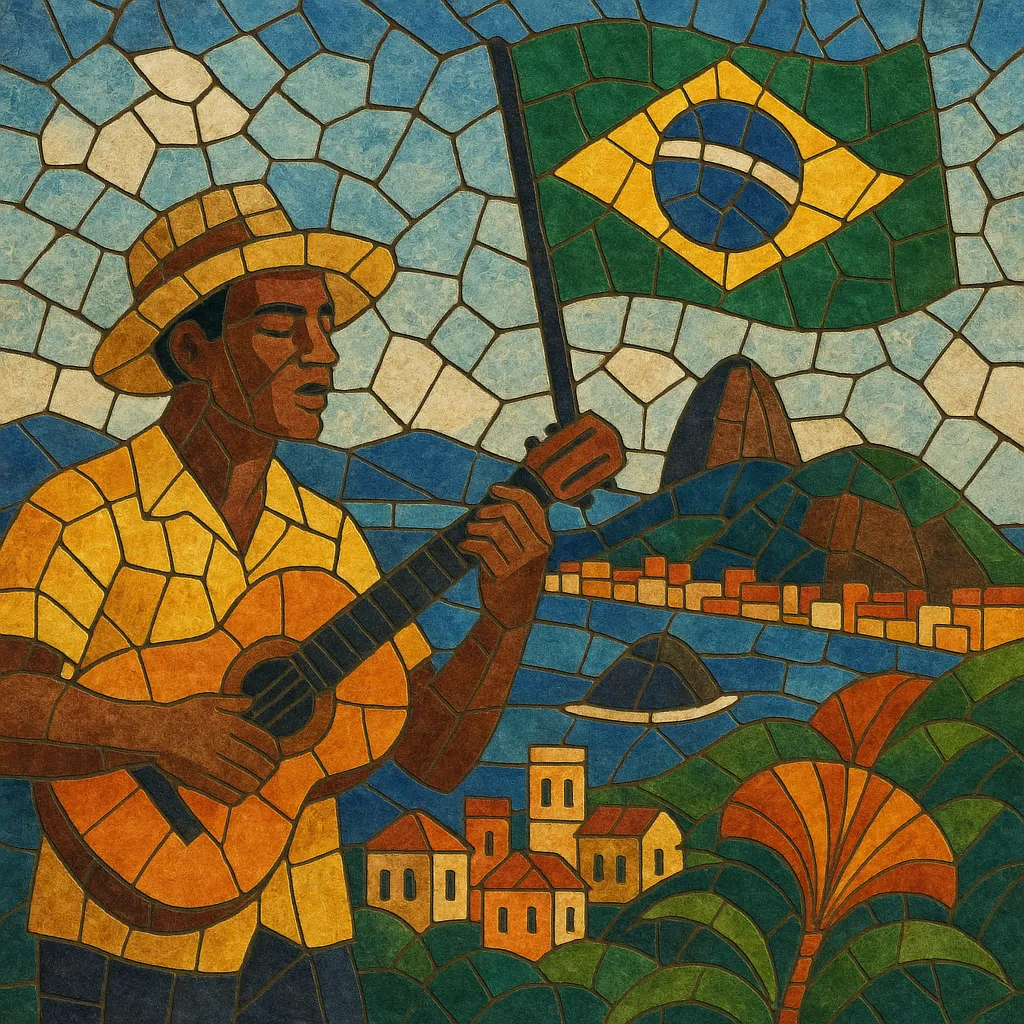Samba-exaltação is a grand, anthem-like branch of Brazilian samba that emerged in the late 1930s.
It blends the syncopated swing of samba with march-like accents, sweeping orchestral arrangements, and large choral refrains to create an uplifting, patriotic atmosphere.
Lyrically, it exalts the Brazilian nation—its landscapes, people, cities (especially Rio de Janeiro), and cultural symbols—often in vivid, picturesque language.
Characterized by medium tempos, bright major-key harmonies, brass fanfares, and climactic modulations, it was a perfect fit for radio, film musicals (chanchadas), and carnival spectacles of the era.
Iconic songs like Ary Barroso’s "Aquarela do Brasil" set the template, making the style synonymous with national pride and celebratory pageantry.
Samba-exaltação arose in Brazil during the Estado Novo period, when radio orchestras, studio crooners, and carnival spectacles favored grand, affirmative songs about the nation. The syncopation of samba was fused with march-like accents and cinematic orchestration. Ary Barroso’s 1939 hit "Aquarela do Brasil" crystallized the style: expansive melodic arcs, brass fanfares, key changes, and lyrics that paint Brazil as a radiant, unified country.
The genre flourished on national radio and in chanchada film musicals, where large ensembles and choirs amplified its anthemic quality. Internationally, "Aquarela do Brasil" appeared in Walt Disney’s Saludos Amigos (1942), helping export the image of a modern, exuberant Brazil. Companion pieces such as "Canta Brasil" (1941), "Brasil Pandeiro" (1940), and city-praising songs like "Cidade Maravilhosa" (often heard at carnival) reinforced the celebratory formula.
Arrangements typically combined samba’s percussion (surdo, pandeiro, tamborim, cuíca) with full brass sections, strings, and choirs. Medium tempos, bright major keys, secondary dominants, and rousing modulations underlined the triumphant mood. Refrains often used call-and-response and massed voices to create a communal, stadium-anthem feeling.
While samba-canção and bossa nova later shifted Brazilian popular music toward intimacy and subtlety, samba-exaltação’s blueprint for spectacle influenced carnival samba-enredo writing and many MPB-era reinterpretations of classic patriotic sambas. The genre remains a cultural touchstone whenever Brazil’s national imagery is celebrated in song.


